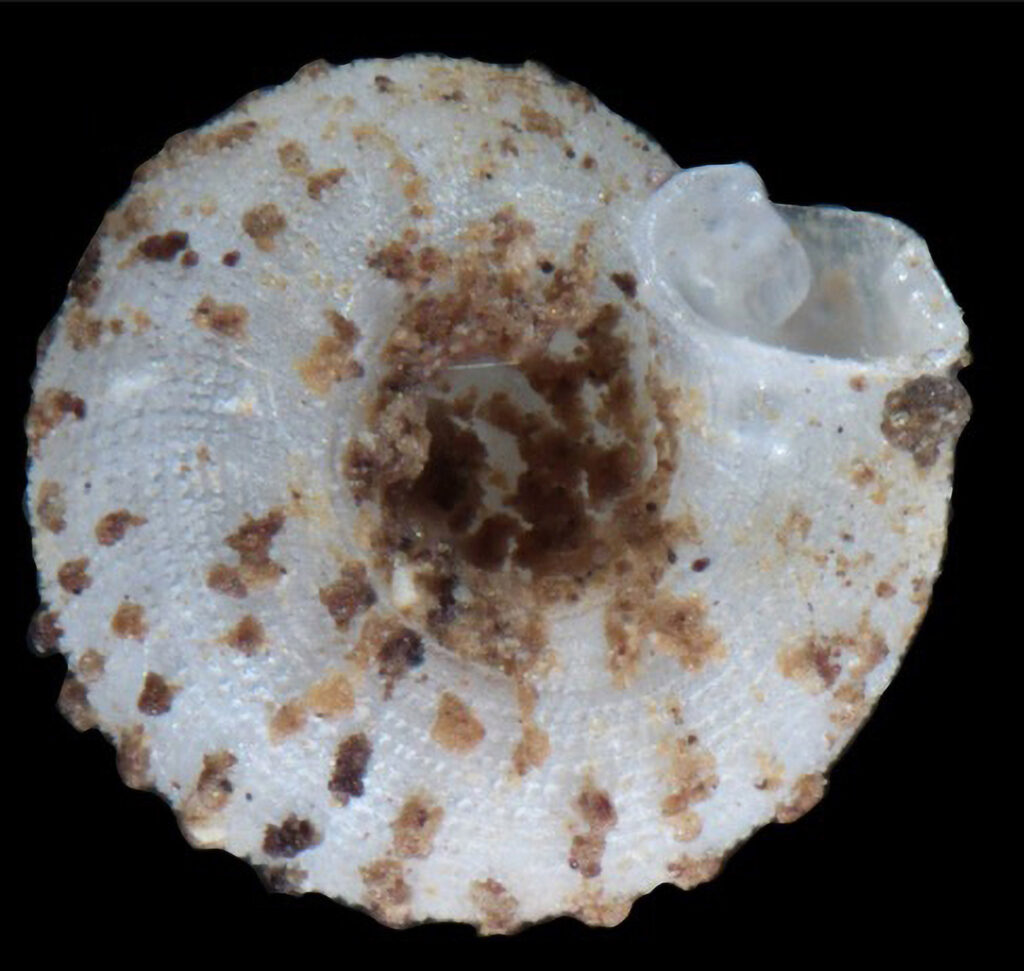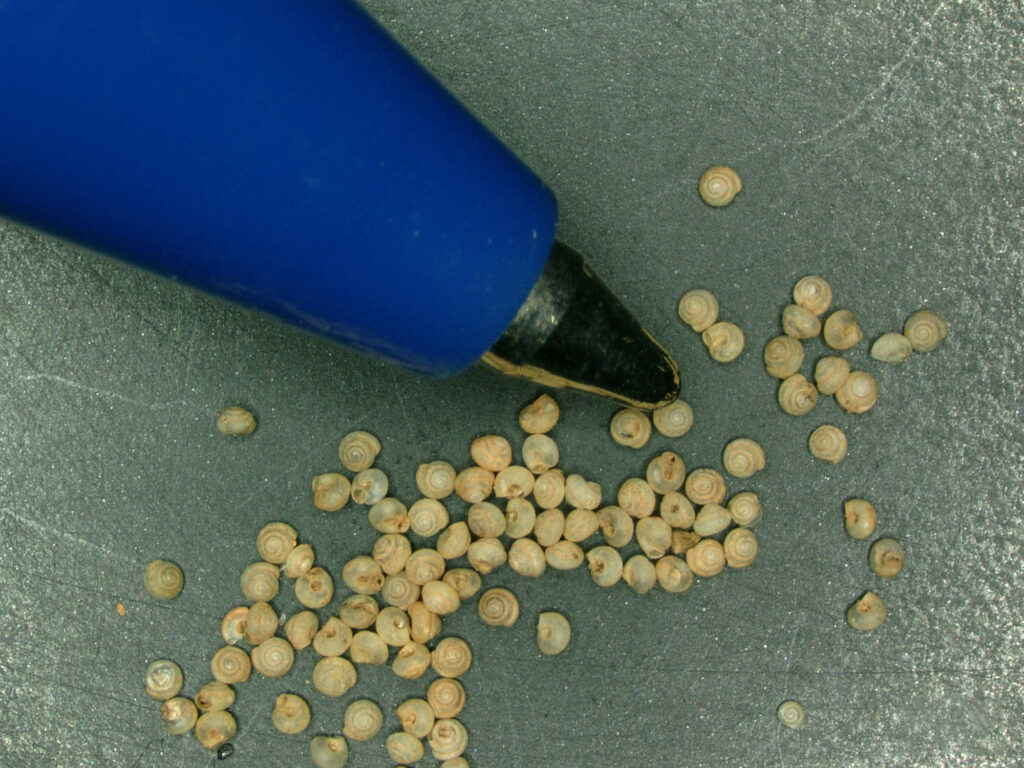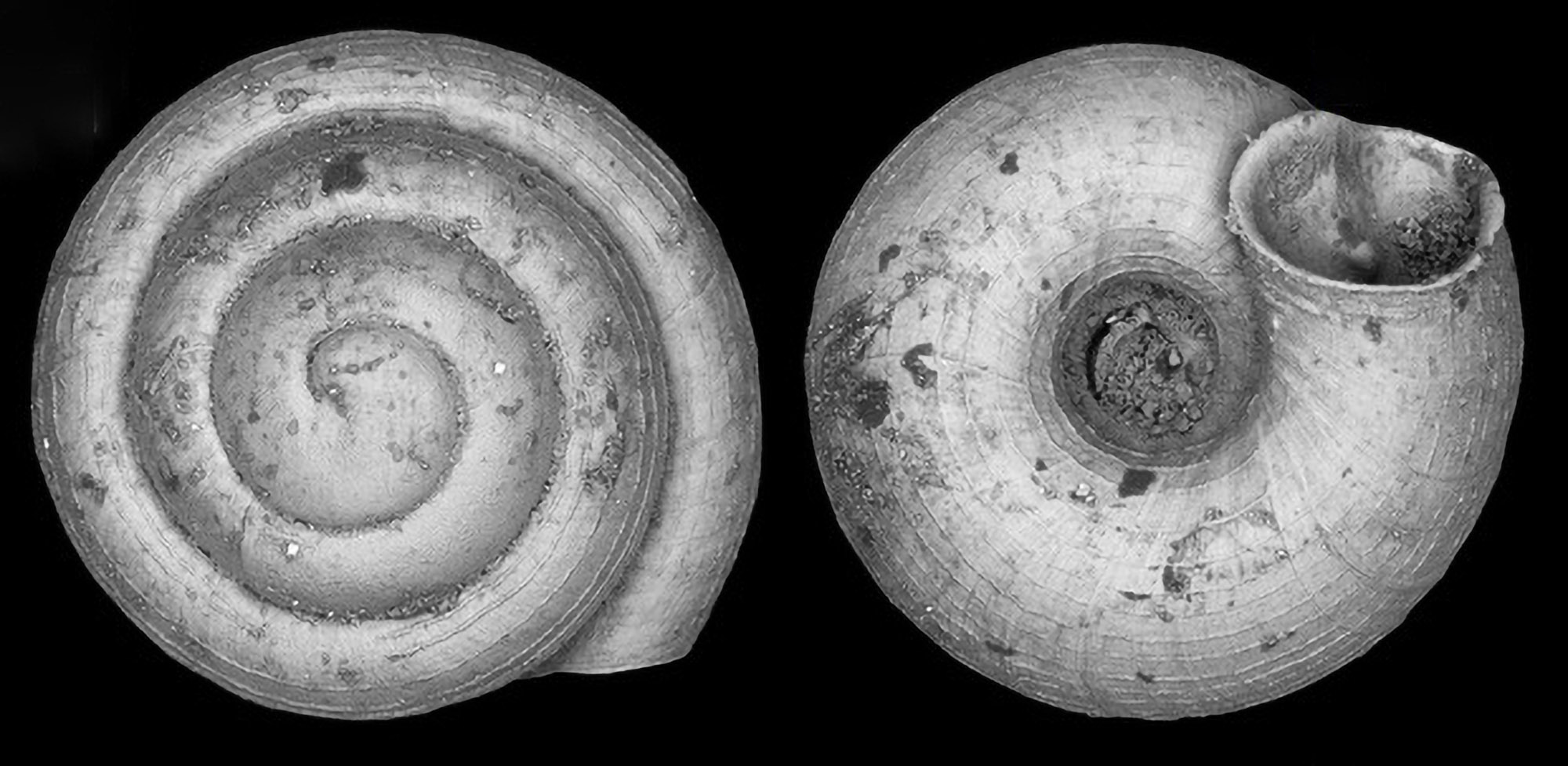German and US researchers have discovered two incredible snails – one of which is smaller than a grain of sand and believed to be the world’s tiniest land snail, and the second is also a small snail that decorates its shell with tiny pieces of faeces.
The presumed smallest species of land snail, which was found in Vietnamese cave sediments, has been named Angustopila psammion, and it is only 0.46 to 0.57 millimetres in size. No less remarkable is the other small species, which decorates its shell with finely arranged grains of faeces.
Head researcher Dr Adrienne Jochum from the Senckenberg Research Institute and Natural History Museum Frankfurt in Germany and the Natural History Museum of Bern and the University of Bern in Switzerland collaborated with scientists from the Netherlands, Hungary and the USA during the project that led the team to Quang Ninh province in northern Vietnam.
Jochum told Newsflash: “It is truly special to discover such a record holder in the animal world – especially since this is, of course, not a matter of course, given the size.”
In order to retrieve the species from the sediments, the researchers had to wash the collected samples in a water tank.

(Senckenberg/Newsflash)
Additionally, they allowed the foam on the water’s surface to dry, after which they were able to recover the tiny snail shells and other material from the remains.
They then cleaned them with fine brushes and identified them under the microscope.
Jochum explained: “Our discovery immediately raised some evolutionary mechanism questions in terms of how some snails could be that small.
“The most plausible thing seems to be that the tiny snails can use previously unoccupied niches – because of their size, they can search for food in confined spaces, as well as eat food particles, which are not interesting for larger animals.”
According to the scientist, their small size gives the snails the advantage of hiding from their predators, which often consider them not interesting enough as food.
Jochum said: “We assume that the size of the snail we have found is already at the lower limit of adult land snails. The animals can not get much smaller because there must be a certain number of neurons that make a snail functional. In addition, the snail shell must also offer enough space for at least one egg.”
The scientists’ method proved useful, as they found another unusual snail species in samples collected from Laos.
The species known as the ‘dung collector’ (Angustopila coprologos), which is only 0.49 to 0.58 millimetres in size is known to decorate its fine, porcelain-like shell with grains of faeces, arranged in a radiating pattern like pearls on a necklace.

(Senckenberg/Newsflash)
Jochum, who explained that other land snails often cover their shells with bark, lichen, clay or soil particles to avoid predators such as birds or beetles, said: “Such optical camouflage makes no sense for the extremely small snails that live in limestone crevices.”
She suspects that the decorations might serve to attract mates, or that they are used as “mini-sponges” that help the snail retain moisture and keep it from drying out.
The head researcher concluded: “In any case, it is surprising that these tiny snails develop such complex mechanisms, about which we – so far – still know little.”
The research project was supported by the Hungarian Academy of Sciences and the Hungarian Research Fund and was published in the scientific journal ‘Contributions to Zoology’ in January.
To find out more about the author, editor or agency that supplied this story – please click below.
Story By: Georgina Jadikovska, Sub-Editor: William McGee, Agency: Newsflash
The Ananova page is created by and dedicated to professional, independent freelance journalists. It is a place for us to showcase our work. When our news is sold to our media partners, we will include the link here.




